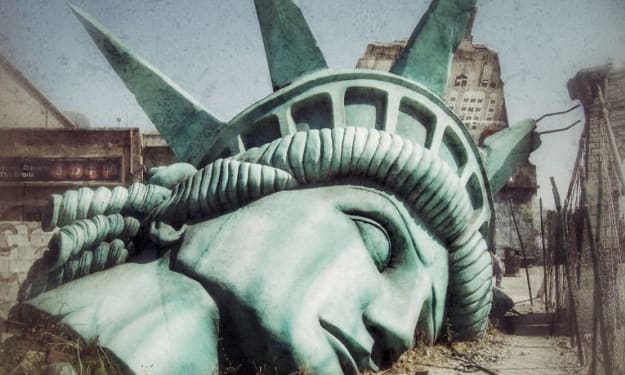How Dinosaurs Wiped out from Earth
How the Rule of dinosaurs Ended

Here is the what Scientists thinks how dinosaurs vanished from Earth.
The Terrifying Asteroid
66 million years ago, a gigantic asteroid, as big as Mount Everest, was on a collision course with Earth. Sixty-six million years ago, dinosaurs had the ultimate bad day. With a devastating asteroid impact, a reign that had lasted 180 million years was abruptly ended. This asteroid was no joke. It was about 10 kilometers in diameter and traveled incredibly fast, like a blazing fireball. Just before it hit Earth, the asteroid was as hot as the surface of the sun. When it finally crashed into Earth off the coast of Mexico, it caused a massive explosion that sent debris flying into the air.
The Devastating Impact
The impact of the asteroid was so powerful that it killed everything in its path. The shockwaves from the impact caused a megatsunami, a gigantic wave over 10 meters high that spread across the ocean. This wave was 30,000 times more powerful than any tsunami we see today. It destroyed coastlines and reshaped the continent. It was a truly apocalyptic event.
Death from Above
Their key piece of evidence is an oddly high amount of the metal iridium in what’s known as the Cretaceous-Paleogene, or K-Pg, layer—the geologic boundary zone that seems to cap any known rock layers containing dinosaur fossils. Iridium is relatively rare in Earth's crust but is more abundant in stony meteorites, which led the Alvarezs to conclude that the mass extinction was caused by an extraterrestrial object. The theory gained even more steam when scientists were able to link the extinction event to a huge impact crater along the coast of Mexico’s Yucatán Peninsula. At about 93 miles wide, the Chicxulub crater seems to be the right size and age to account for the dino die-off. In 2016, scientists drilled a rock core inside the underwater part of Chicxulub, pulling up a sample stretching deep beneath the seabed. This rare peek inside the guts of the crater showed that the impact would have been powerful enough to send deadly amounts of vaporized rock and gases into the atmosphere, and that the effects would have persisted for years. And in 2019, paleontologists digging in North Dakota found a treasure trove of fossils extremely close to the K-Pg boundary, essentially capturing the remains of an entire ecosystem that existed shortly before the mass extinction. Tellingly, the fossil-bearing layers contain loads of tiny glass bits called tektites—likely blobs of melted rock kicked up by the impact that solidified in the atmosphere and then rained down over Earth.
The Aftermath
While some dinosaurs survived the initial impact, their fate was sealed. The debris from the impact caused a nuclear winter, blocking out the sunlight and making the Earth cold and dark. This led to dramatic climate changes and disrupted the food chain. Many plants and animals couldn't survive in these harsh conditions. Acid rain also caused devastation to ecosystems, especially in the oceans where marine life couldn't adapt to the acidity.
Earth's Recovery
It took Earth thousands of years to recover from this catastrophic event. After the post-apocalyptic winter, life slowly started to make a comeback. Ferns were among the first plants to reappear, and small creatures similar to raccoons repopulated the continents. Over millions of years, Earth restored its biodiversity, but it was a new Earth. Mammals, birds, and flowering plants took over, and the age of dinosaurs was over.
Protecting Our Planet
Today, Earth still faces many environmental problems, but it's not too late to make a difference. Each living being on Earth knows the importance of Earth in our lives. Without Earth, we cannot even imagine living. Have you ever thought how we would walk if there is no Earth, there will be no water to drink, there will not be animals living here, and of course, no cultivation, so no food to eat. This means to say that the life of humans, as well as other living beings, cannot be imagined without Earth. So we have to take solid measure to protect our environment as well as the planet.





Comments
There are no comments for this story
Be the first to respond and start the conversation.